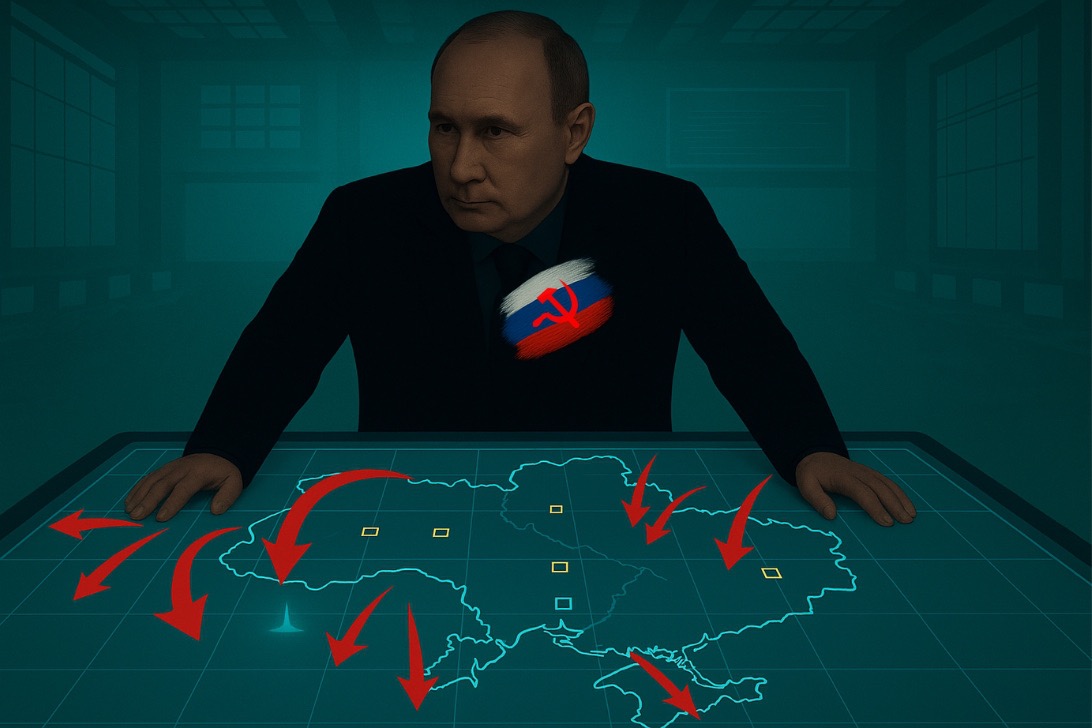A recent analysis by Dara Massicot in Foreign Affairs, published on 8 October 2025, reveals that Russia has systematically adapted its military strategy and approach to warfare in Ukraine. This evolution poses significant new challenges for Kyiv and its Western allies. Since 2022, Russia has transformed its military into a learning organization capable of evolving during the current conflict and preparing for future high-tech engagements.
Russia's systematic learning and adaptation
Initially underestimated by NATO, Russia's military faced setbacks in Ukraine but has since undertaken systematic efforts to learn from its combat experience. By early 2023, Moscow had established a complex learning ecosystem involving its defense manufacturing base, universities, and military personnel across all ranks.
This institutionalization of knowledge has led to new battlefield tactics, codified training programs, and improved weaponry. Russia has notably enhanced its drone capabilities, turning a former weakness into a strength. It has also developed better missiles, more robust armored systems, and is granting junior commanders more autonomy in planning.
The military's learning process, as described in the Foreign Affairs article, involves five key steps:
- acquiring combat experience
- analyzing it
- proposing recommendations
- disseminating them throughout the force
- and finally implementing them
In 2022, dedicated staff officers and researchers were deployed to frontline command posts to observe the war, review battle results, and interview personnel.
These "lessons learned" reports were then shared with military headquarters, academies, and defense firms. This systematic approach has led to adjustments in command structure, tactics, logistics, and the introduction of new technologies for precision targeting and electronic warfare.
The “learning-industrial complex”
Russia's learning ecosystem has expanded significantly, with over 20 commissions in Moscow dedicated to implementing frontline recommendations. Lessons are disseminated through bulletins, workshops, and conferences. For example, the Southern Military District repeatedly gathers personnel from various branches and the defense industry to improve their ability to detect, suppress, and destroy drones.
A 2023 conference at Russia's Artillery Academy revised artillery tactics to integrate drones.
“In just three years, Russia has made more than 450 interim modifications to its combat manuals,” the article reads.
The defense industry, initially slow to respond, has been instructed to improve production, increase repair rates, and accelerate innovation. Regulations were relaxed to shorten research and development timelines. Defense companies sent specialists to occupied Ukrainian territories to repair equipment and study its performance.
Since early 2023, the Kremlin has integrated civilian universities and research centers into its national defense efforts, fostering collaboration between military and civilian engineers. Initiatives were launched to support defense startups, connecting them with state-owned companies and allowing them to sell products to the military. These efforts have helped Russia narrow the technological gap that Ukraine initially had.
Training and future warfare
Russia's learning extends to its training programs, which are being thoroughly reviewed and updated with combat experience. Troops are rotated between the battlefield and training ranges, and secure videoconferences connect frontline units with academies. Disabled veterans are becoming full-time instructors.
Training changes include more realistic simulators, modified tactical first aid instruction, and teaching troops to navigate drone-saturated battlefields and conduct small assaults. Drones are now used to monitor soldiers' training, allowing for better evaluations.
Junior officer training has also been modified with a two-month supplemental session focusing on marksmanship, artillery, reconnaissance, navigation, drone use, and tactical medicine. Instructors are emphasizing small unit command, and in a significant shift for the traditionally top-down Russian military, some junior officers are being taught mission planning.
Looking ahead, Russia envisions a future of combat dominated by UAVs, robots, and autonomous systems. Military experts believe that uncrewed systems will be the most important weapons of the twenty-first century, with swarms of autonomous drones, microdrones, and drones mimicking wildlife.
The military is also preparing to invest more in combat robots for sentry duty, logistics, mining, and undersea surveillance. Artificial intelligence is considered essential for modern combat, with plans to field AI decision-making systems and AI-enabled weapons by the early 2030s.
Challenges for Ukraine and Western allies
The article further concludes that these Russian adaptations mean that Ukraine is likely to face greater destruction, with faster and more numerous drone attacks, increased harm to cities and infrastructure, and more missiles penetrating defenses. The frontlines will become more dangerous.
While these changes may not lead to dramatic breakthroughs for Russia, they enable Moscow to continue trading soldiers' lives for slow gains in the Donbas, hoping NATO tires of the conflict.
Massicot emphasizes that these adaptations should concern policymakers beyond Ukraine. The Russian military might emerge from the invasion with extensive experience and a distinct vision of future combat, sharing its knowledge with China, Iran, and North Korea.
While Russia will still face issues like poor discipline and difficulties producing sophisticated equipment, it will be as ready for the new way of war as any other state. To avoid falling behind, Washington and European capitals must learn from the war in Ukraine by studying Russia's adaptations and making their own changes.
This includes procuring more UAVs and adopting other innovations, as Moscow is passing its knowledge to autocratic partners. NATO must prove that its concerns about Russian capabilities are justified by accelerating its analysis of the invasion and adapting its procurement plans, training regimens, and operational concepts.




